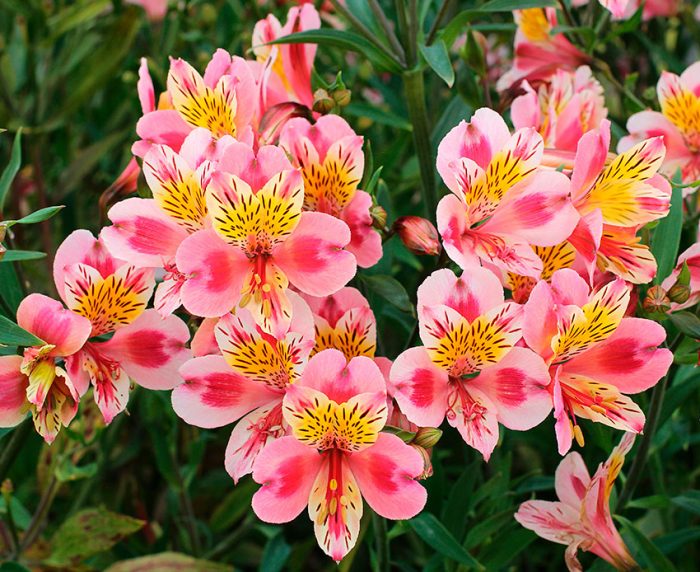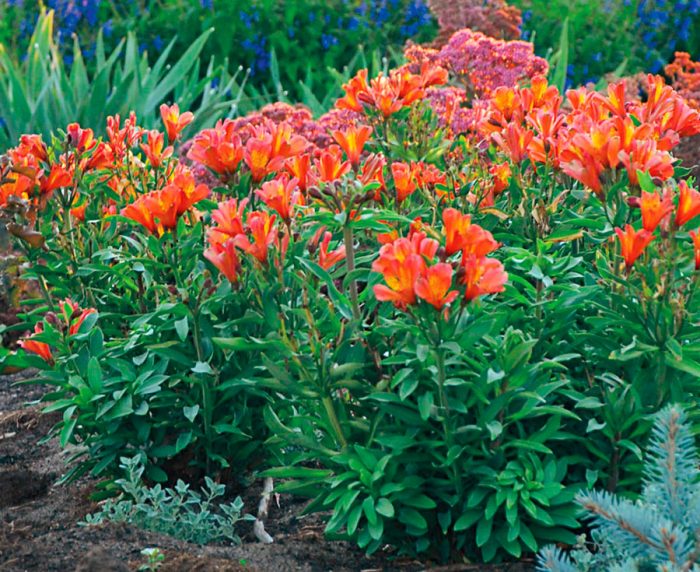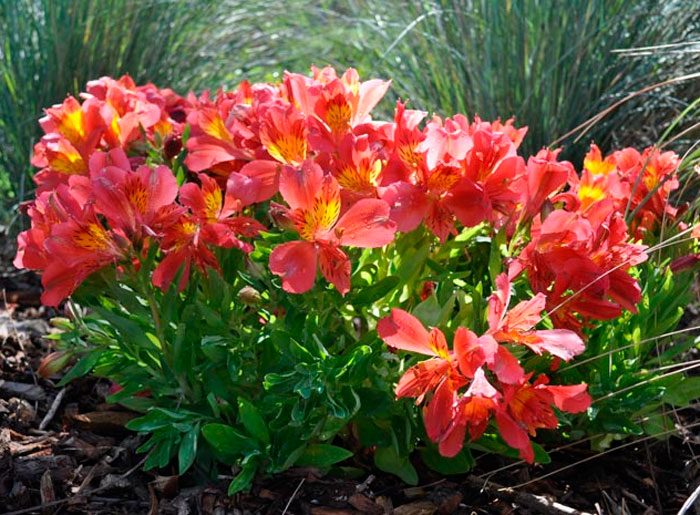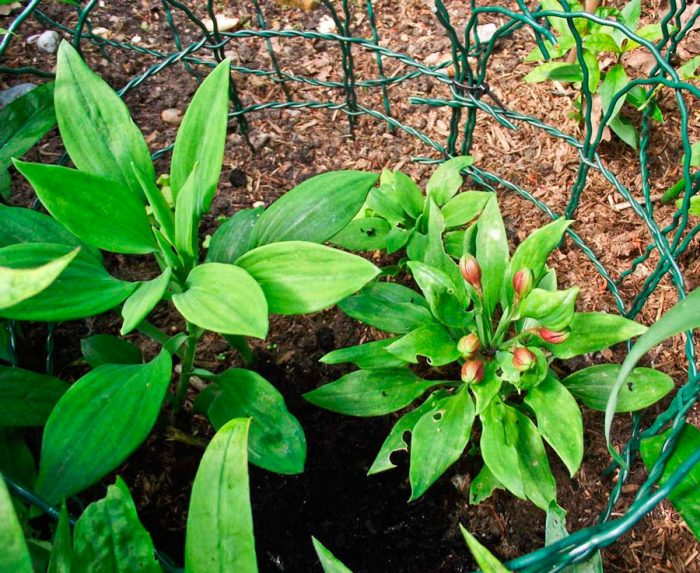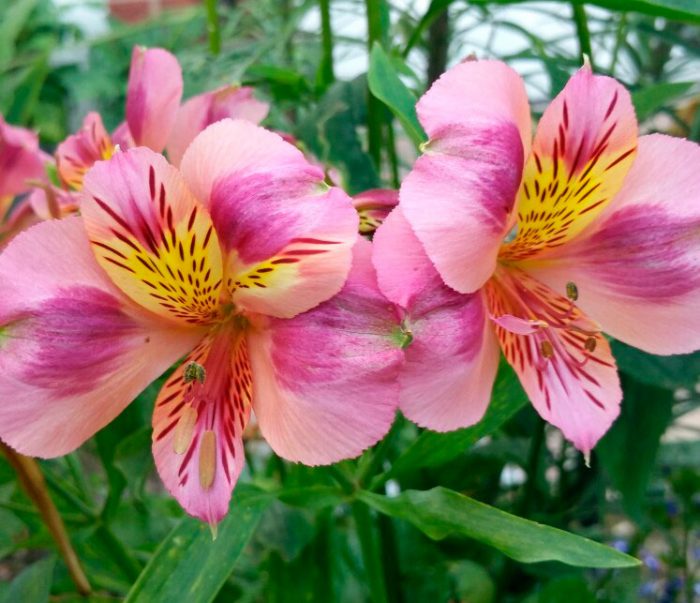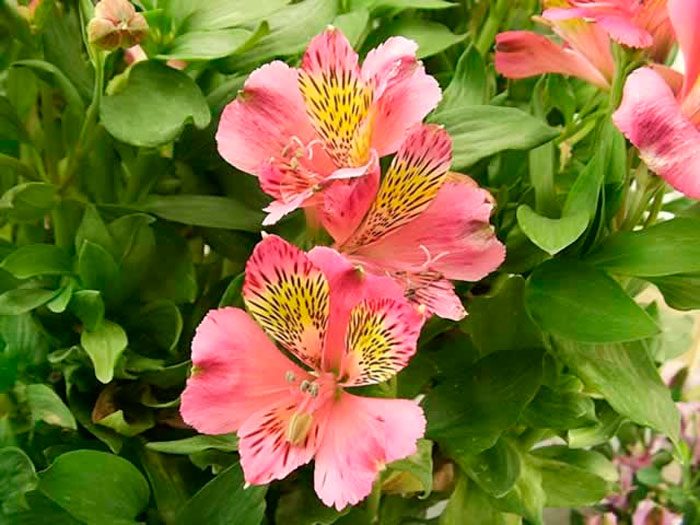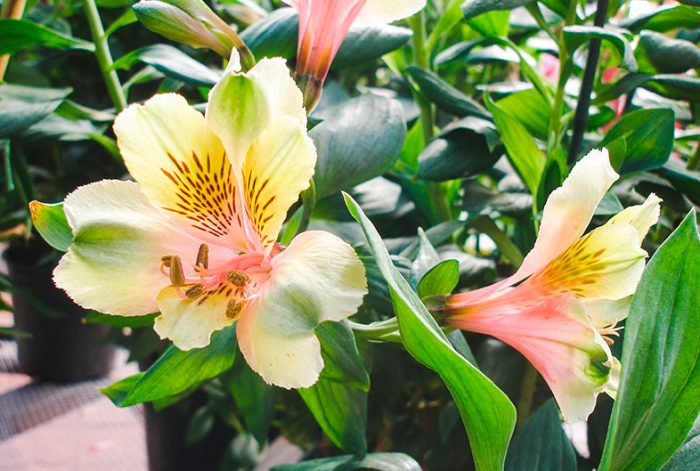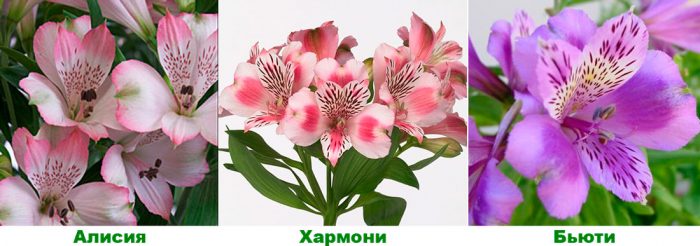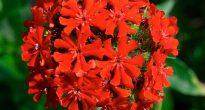The South American rhizomatous tuberous herb Alstroemeria, also called Alstroemeria, or Alstroemeria, is a representative of the Alstroemeria family. This flowering plant is also called the "lily of the Incas" or "Peruvian lily". This family and genus was named after Karl Linnaeus's student, Baron Klas Alström: he was a Swedish philanthropist, industrialist and botanist who lived in the 18th century, it was he who brought the seeds of two types of alstroemeria to his teacher Linnaeus. Very often in the literature, such a plant is called "alstroemeria". In nature, it is found throughout South America. This genus unites approximately 50–100 species. Most of them are widely cultivated as decorative flowering garden plants that can also be used for cutting.
Content
Features of alstroemeria
Alstroemeria has succulent spindle-shaped roots. The shoots are flexible and erect, in the upper part of them, in the next order, one-piece thin, slightly curved leaf plates of a linear shape are placed. Such a culture has one feature - resupation: in the foliage, the petioles are strongly twisted by 180 degrees, as a result, the front surface of the plate turns out to be below, and the wrong surface is on top. The flowers can be colored yellow, orange, pink, red or lilac; specks are often located on their surface. The composition of the flowers includes 6 spatulate or lanceolate petals, which are placed in 2 circles, while the petals of each of them, as a rule, differ in shape and color. On the surface of the petals, there are almost always longitudinally located streaks of a dark color; as they approach the middle, they become thinner and shorter. The nectars are located at the base of the petals of the inner circle. Another 2 circles accommodate 6 stamens with elongated anthers. Such a plant blooms in spring and summer, and if you take good care of it, then most varieties and species can bloom again in September. Hummingbirds and various insects are pollinators of alstroemeria flowers. The fruit is a box with spherical seeds inside. The ripe fruit bursts, and the seeds scatter and spread on their own without intermediaries.
When grown in mid-latitudes in winter, such a crop often freezes out.In this regard, it is recommended to cultivate it in such regions in a greenhouse, greenhouse or at home. Such a plant is grown in open soil only in the southern regions with a mild and warm climate.
Planting alstroemeria in the open field
What time to plant
It is possible to grow alstroemeria on your site from seeds, but such plants will begin to bloom only 1–2 years after the seedlings appear. If you want to see flowering already this year, then buy seedlings of such a plant in a special store.
If self-collected seeds are used for sowing, then it must be borne in mind that the flowers obtained from them will not be able to preserve the varietal characteristics of the parent plant. In this regard, this breeding method is suitable only for species of alstroemeria. By the way, you can try to grow a new variety of this crop from such seeds.
Buying seedlings can also be complicated by the fact that sellers will not have a certain variety that you just need. But seeds can be purchased almost of any kind, garden form and hybrid. In this regard, if there is no such flower on your garden plot yet, then it is best to buy alstroemeria seeds for primary cultivation.
Sowing seeds can be done directly into open soil. They do this in April-May, while the first seedlings should appear after about 20 days. But experienced gardeners are advised to grow such a crop through seedlings. Sowing material is sown for seedlings in the last days of February or the first in March.
Landing rules
The seed needs preliminary stratification, for this it is first placed in a moistened cloth and removed for 4 weeks on a refrigerator shelf intended for vegetables. After that, they are sown in a moist nutritious soil mixture, they need to be buried in the substrate only 10 mm. The container must be covered with film or glass on top, after which the crops are harvested in a cool place (about 18 degrees). You do not need to water them. In order not to dive seedlings, alstroemeria must be sown in individual cups, but it is best to take peat pots, because plants in open ground can be planted directly in them.
The first seedlings should appear after 20-30 days. Alstroemeria seedlings must be looked after in the same way as other flower seedlings. They should be provided with moderate watering, and they will need to be fed 2 or 3 times before transplanting into open soil. During the formation of the first true leaf plate, the seedlings should be fed with a weak mullein solution (1:20). The second time the plants are fed with a solution consisting of 3 grams of nitrate, 6 grams of superphosphate, 3 grams of potassium sulfate and a couple of liters of water. This volume is enough to feed 10 plants.
When growing seedlings in a common container, its picking in individual cups is carried out during the formation of its third true leaf plate, while it needs to be fed a second time 5 days after this procedure. Half a month before transplanting seedlings into open soil, it must be hardened. To do this, it is transferred to the street every day, while the duration of the plants' stay in the fresh air must be increased gradually. It is necessary to harden the plant until they can stay outside around the clock. During hardening, if desired, you can make a third feeding of the plants, while using the same nutrient mixture as the second time. Seedlings are planted in open soil in the second half of May, while it should already be warm enough outside, and return spring frosts should be left behind. You also need to take into account that alstroemeria is planted in a soil warmed up to at least 20 degrees.
Landing in open ground
It is quite easy to grow such a culture in your garden. For planting seedlings, it is necessary to choose a site that has reliable protection against gusts of wind and drafts, it should be illuminated by the sun either in the early morning or in the evening after 4 pm. trees or shrubs. The soil should be loose, water-permeable, saturated with nutrients, slightly acidic or neutral. Sandy or clay soils are best suited for planting such a flower. If the soil is heavy, then 1 day before planting, you need to dig it up with the introduction of a baking powder, which can be used as leaf humus (compost), rotted manure (humus) or high-moor peat.
Seedlings are planted in the usual way. When planting in open ground, a distance of 0.3 to 0.5 m should be left between the bushes. In diameter, the landing pits should reach 0.35–0.5 m, and their depth should be 0.25–0.35 m. It should be borne in mind that in the prepared pits, the root system of the plant should freely fit together with the earthen lump. It should be borne in mind that the more vigorous the variety you plant, the larger the holes should be, as well as the longer the distance between them. At the bottom of the planting hole, a drainage layer must be made, for this, 1 handful of small expanded clay or crushed stone is poured into it, after which a layer of compost is placed in it, the thickness of which should be from 70 to 80 mm. Only then is the plant transferred into it along with a clod of earth or is planted directly in a peat pot if the seedling was grown in it. The empty space in the hole must be covered with fertile soil. The surface of the soil around the bushes is compacted, and then they are well watered.
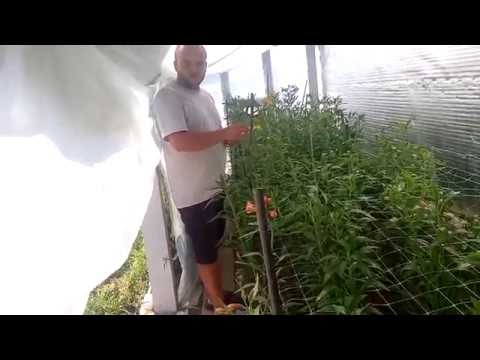

Watch this video on YouTube
Alstroemeria care in the garden
To grow alstroemeria in your garden plot, it is necessary to water it in a timely manner, feed it, weed it, loosen the soil surface around the bushes, and such a plant must, if necessary, be protected from pests and diseases, and also be sure to prepare it for wintering. When growing such a crop, it should be remembered that the surface of the soil around the bushes must be covered with a layer of mulch.
After the soil warms up to 23 degrees or more, the bushes will begin to actively build up the root system, and flowering suffers from this. In order for the bushes to be spectacular and luxuriantly blooming, the surface of the soil in the flower garden must be mulched with organic material (peat, sawdust or chopped bark), the thickness of such a layer must be at least 10 mm. This will help prevent overheating of the soil. Weeding and loosening of the soil surface can be carried out through the mulch layer without removing it.
During the flowering period, it is important to promptly cut off flowers that have begun to fade. It is systematically necessary to thin out the bushes, but only when they become excessively dense. When thinning alstroemeria, it is necessary to cut thin, weakened and growing stems inside the bush.
How to water and feed
It is necessary to water the plant moderately and systematically. If it rains periodically in the summer, then you need to water the bushes once every 7 days. In a dry period, it is necessary to water alstroemeria more often, namely, 2 times every 7 days. The soil surface on the site must be constantly moist. If you water the plant very abundantly, then the root system can rot, and if it does not get water, then the bush will lose its spectacular appearance. When watering is completed, the soil surface near the bushes must be loosened, while pulling out all the weeds.
In order for the greens near the bushes to have a rich color, as well as to increase the number of flowers, alstroemeria must be fed regularly 3 times every 4 weeks, for this, mineral or organic fertilizers are used. During the intensive growth of greenery, the plant needs a lot of nitrogen. And when bud formation and flowering begin, alstroemeria will need a lot of phosphorus. Systematically, wood ash should be scattered under the bushes.
Reproduction of alstroemeria
It is very easy to propagate such a culture. How to grow such a plant from seeds is described in detail above. If you already have alstroemeria on your garden plot, you can propagate once every couple of years by dividing the rhizome. This procedure is carried out after the bush has faded. The bush extracted from the soil must be divided into several parts with a sterilized sharp knife, while each division should have several powerful stems and a part of the rhizome. Large cuttings should be immediately planted in open ground in pits, which should be prepared in advance, before that, do not forget to process the cut points with crushed charcoal. In this case, small delenki must be planted in pots, and then they are removed on the windowsill or in the greenhouse for growing. In March or April, if necessary, you can separate several divisions from the bushes and immediately plant them in open soil, while the plant itself is not dug up. However, this breeding method is only suitable for powerful bushes.
Wintering
Flowering lasts about a couple of months. After the flowers have withered, the arrows should be cut as close to the base as possible. In late autumn, the stems should be shortened to 0.2 m.Then the plant should be covered with a thick layer of spruce branches or loose leaves, it should be covered with a film on top, and it should be covered with garden soil, which must be combined with humus. As a result, it will be possible to protect the root system from freezing.
Diseases and pests
Alstroemeria is very resistant to pests and diseases. But if the bushes are watered too abundantly, then they can get sick with gray rot. As soon as the first symptoms of such a disease are noticed, namely, a fluffy bloom of gray color appears on the aerial parts of the bush, you should start treating the plant. The affected parts of the bush should be cut out, and it and the soil around it should be sprayed with a fungicidal preparation. Those plants that are very infected must be dug up and destroyed, otherwise the disease will spread to nearby pieces.
With poor care, caterpillars and spider mites can settle on alstroemeria. Acaricides are used to get rid of ticks, and insecticides are used to kill caterpillars. Any pests can be destroyed by such means as Aktara, Aktellik or Akarin. Slugs can also settle on flowers, which eat foliage. To prevent such pests from settling on the bushes, the surface of the site must be covered with a layer of coarse bark, and a groove must be dug around the perimeter of the site, which is filled with rubble, it will become an insurmountable obstacle for mollusks.
Types and varieties of alstroemeria with photos
Several types of alstroemeria are cultivated by gardeners: psittacina, haematantha, nana, brasiliensis, aurea, aurantiaca and others. Often, in garden plots, you can meet hybrids and varieties of this culture. The most popular varieties will be described below:
- Alicia... This hybrid has white or pink flowers. Flowering occurs in June – September.
- Beauty... Plant height can vary from 1.3 to 1.7 m, its shoots are straight and strong. The flowers are lilac, in some cases acquiring a lilac-blue hue. The plant blooms in springtime, and again in September.
- Harmony... The tall bush has powerful stems, it can reach a height of about 1.6 m.Flowering is observed in April – June, and repeated in September and before the onset of frost. The color of the flowers is bronze, and on their surface there is a distinct pattern of black strokes.
- Canaria... The height of the bush is at least 1.5 m, its shoots are relatively thick. Flowering is observed in May – June, and in September and before the first frost. The color of the flowers is canary yellow, and there is a small speck on their surface.
- King Cardinal... The height of the bushes is about one and a half meters, their peduncles are relatively weak. If the flowers do not have enough light, then they can lie down. Flowering lasts from spring to autumn. The color of the flowers is scarlet. The flowers are shaped like an orchid.
- Regina... This hybrid is very popular with gardeners. Dark green leaf plates are lanceolate. The color of funnel-shaped flowers is pink, and there are brown streaks on their surface. Umbellate racemose inflorescence consists of 10-15 flowers. The plant blooms in the last days of June and fades in mid-September.
- White Wings... The height of the bush with powerful shoots is about 200 cm. The leaf plates are large enough. The snow-white flowers have an attractive shape. Flowering is observed throughout the summer period with a break of several weeks in July – August.
- Virginia... The height of the bush is about 0.7 m. Powerful stems are decorated with large white flowers. The edges of the petals are wavy. Flowering begins in June, and it ends with the first frost.
- Orange Queen... The height of the plant is about 0.7 m. The color of the flowers is apricot, and on their surface there are specks of brown.
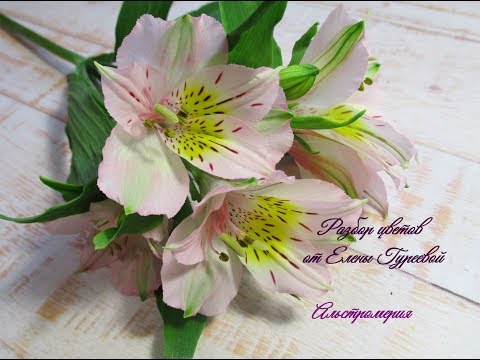

Watch this video on YouTube

